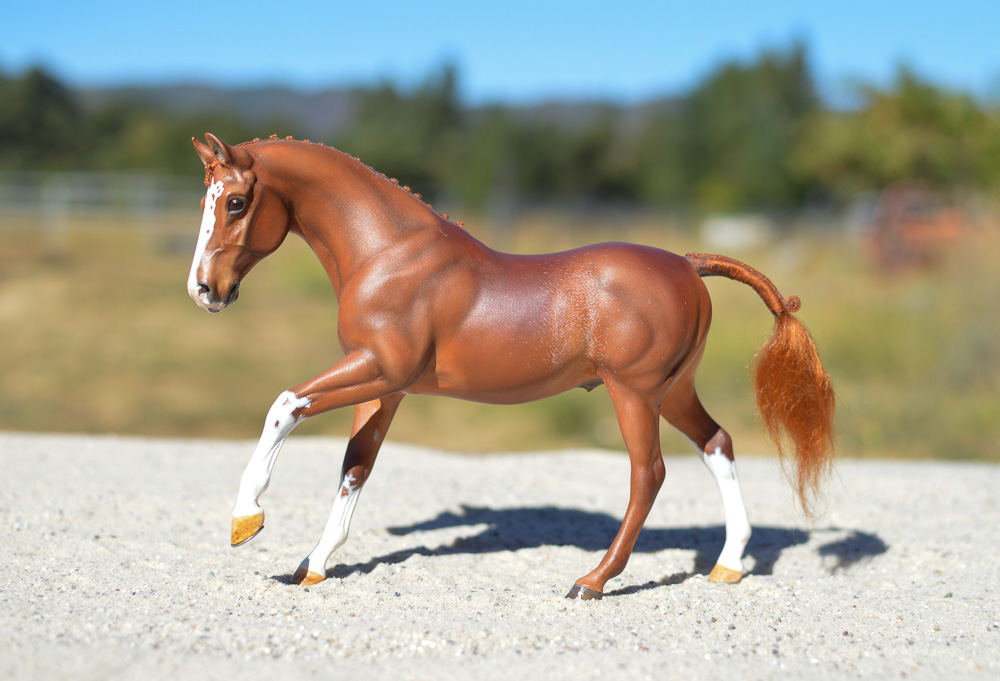I finished Pinball Wizard in 1992, and wrote this story up several years later. I dredged it out of the archives and am republishing it here.
Long ago, I had a Classic Arabian Stallion (CAS) for remaking. I decided to remake his head and neck into a more mannerly riding horse position. This was back when I used boiling water to soften the plastic, so I made some cuts in the neck with a hacksaw, and immersed the neck and head in boiling water. Then I moved the head into the position I wanted. When he cooled, I filled in the neck with “epoxy ribbon” (a product long since abandoned for Martin Carbone epoxy), and left him to cure. Unfortunately, when I bent the neck, it came out rather thick (from the top, not the side), and so it was going to require quite a bit of effort to dremel away the excess epoxy and plastic and resculpt the neck. I had also distorted his head slightly (his face came out more dished! but it didn’t look too bad) when I pushed on his nose to position it. Even if I had been willing to try, it would have been nearly impossible to resculpt his neck with that epoxy. So he sat on the workbench for a few years.
Then one day while I was visiting my mother’s house, I checked out my workbench for any likely remake prospects, and there he was. I decided to take him home to join the pile of “local” prospects, thinking that I could probably fix him now. He sat there for a while, too.
Meanwhile, I had purchased some unfinished Hartlands for remaking. One was the TB, which has a ridiculously small head for its body, so I replaced it with a remade Breyer head. Well, that took care of the extra Breyer head that had been sitting around, but what would I do with the Hartland head? I “tried it on” several models on my workbench, and it was a good match for size with the CAS. And then I started to get excited. If I turned the head to the left, using the left side as the main “show side,” it’d be really hard to tell that I’d used the CAS since the head and neck would be different. It would make a wonderful grade pony, I decided: not elegant, but structurally sound, cute, and the sort that babysits little kids and shows them the ropes. The sort that occasionally shows up in someone’s backyard, is discovered, and becomes irreplaceable. Now I was ready!
I used a hacksaw to saw off the head and neck along the line of the shoulder. To support the eventual neck, I used crumpled aluminum foil (not too crumpled; you need the “springy” effect from light crumpling). I placed it in the body cavity, and epoxied it to the shoulder. After the epoxy cured, I shaped it into a neck (turning left), and stuffed the end into the new head. The foil can be manipulated to alter the neck length and the way the head hangs from the neck until the entire “look” is satisfactory. Then I epoxied the head into place. Once the head and body were attached, I covered the entire foil section with epoxy to fix everything in place. Then I started the long process of making it into a neck: sculpting epoxy muscles, light sanding, sometimes some dremeling if I changed my mind, more epoxy, etc.
Since the Hartland head isn’t very detailed, and I wanted it to be a smidge bigger anyway, I dremeled off the sides of the muzzle and sculpted a new one. I also sculpted new eyes and carved the excess plastic out of the ears.
I wanted him to be cantering, so I got out my trusty heat gun (the kind you buy for paint stripping; I got mine at Sears with a few narrowing attachments for around $30) and heated his upper left forearm to lift it a bit and give him more action. I may also have unbent the knee slightly (by heating the knee), but I don’t remember. I dremeled any plastic protruding from his forearm, and resculpted an acceptable forearm over the plastic structure with epoxy.
I removed his tail with a hacksaw and the dremel, and used a twist-tie as a base for a new epoxy tailbone. I sculpted a tailbone about as long as a tailbone should be, then left a bit of twist tie for the lower part of his tail (this way, I can move it about a bit to provide different looks).
I checked for small divots (pits, imperfections, etc), then painted him with acrylic gesso. The gesso is a primer, and it also allows you to see divots more clearly, since you’re not distracted by color. I used sandpaper and epoxy (though not at the same time! :-) ) to finish smoothing everything, get the last of the mold seams, etc. Then I painted him chestnut with oil paints. (actually, I had to paint him several times. His coat just didn’t want to turn out right!) Next I sprayed him with Krylon Matte spray to protect the paint.
Now, he was ready for markings. I wanted him to really stand out, and he does: he’s a pretty red-gold chestnut, with a white face and three socks. His markings are sabino–very irregular, and all of his socks go above the joint. He also has some small spots within his face marking and some of his leg markings. He also expresses the rabicano pattern: white hairs in the coat expressed mainly near the flanks. Rabicano is frequently described as roan, but it is different, since roan necessarily affects the entire horse except for the legs and face. To create this effect, I drew on each hair with a pencil! I’d seen a Carol Williams QH done this way, and I knew I wanted to try it. So I did. And it actually worked!
His mane is braided embroidery floss and the tail is a mix of embroidery floss and mohair.
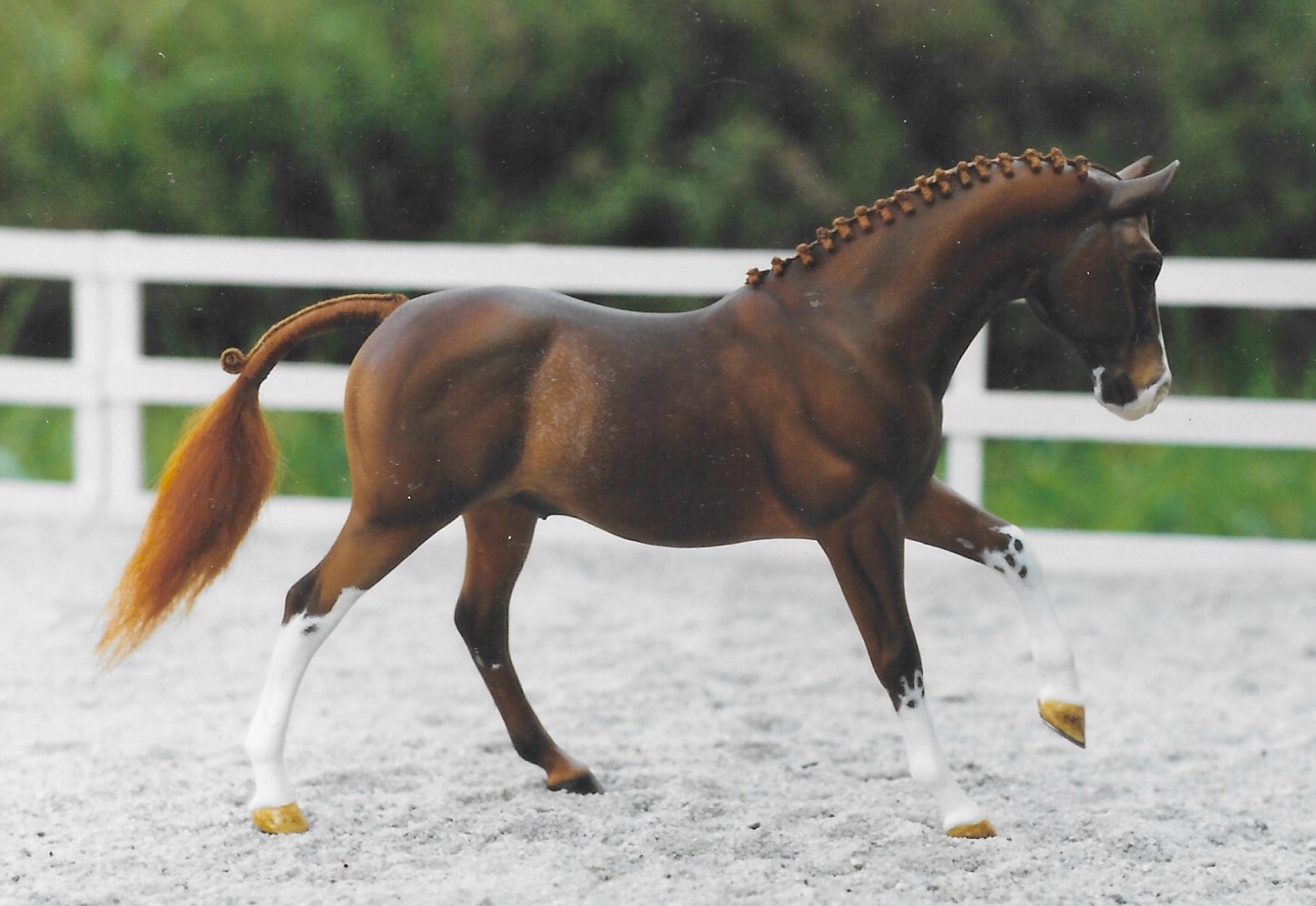
“Pinball Wizard” turned out to be a multi-champion in both live and photo showing, in both halter and performance. He is still one of my favorites.
___ That’s the text I wrote when he was created (lightly edited). I still remember the image that first started me thinking down these lines, a chestnut pony in Practical Horseman magazine with pink polo wraps and a pink pony kid up, as well as the sturdy ponies of my youth I saw around California who raised up some fabulous riders, like Waltzing Matilda of Foxfield and Sunny Side Up of Camelot. These ponies in California came from uncertain parentage and were probably often undersized horses, but they jumped around and took great care of their kids.
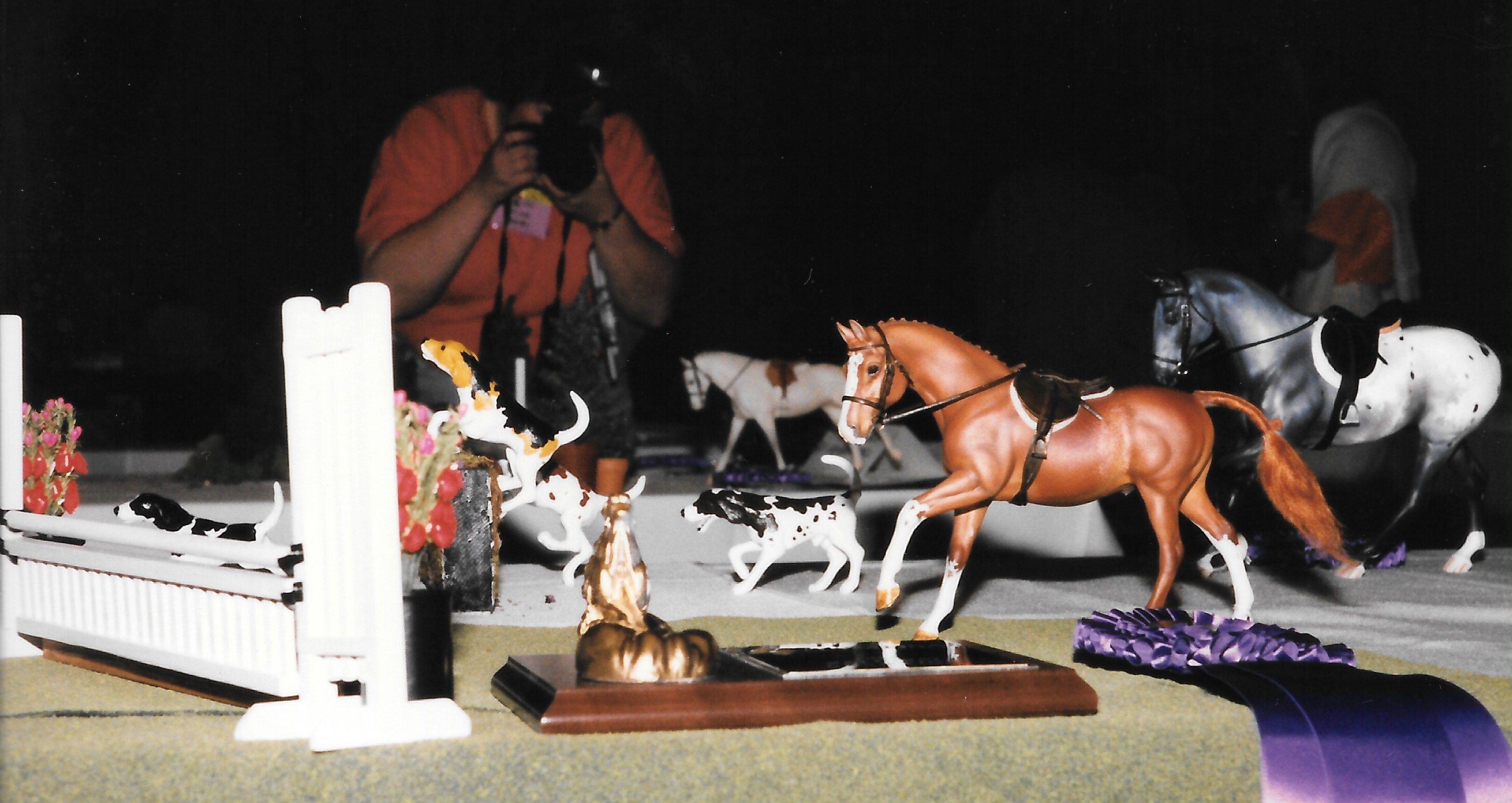
Pinball Wizard, 1996 NAN Champion Hunter
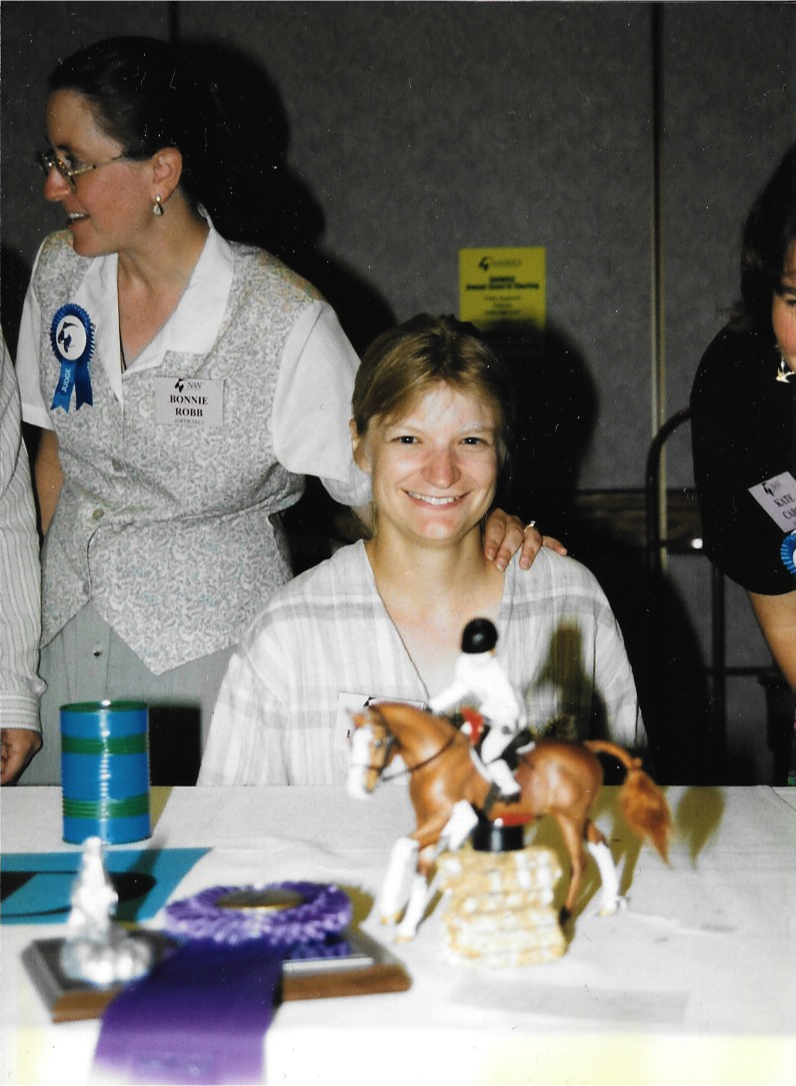
Pinball Wizard, 1996 NAN Reserve Champion Games
Pinball Wizard has been a superstar since he was created, attending the very first NAN and winning the NAN Hunter class in 1996. I showed him for several years in venues all over the country, as well as in photo shows, and he was brilliant. His picture was in Just About Horses, kind of a pinnacle of “how you get to be a famous model horse.” He was eventually retired to make room for other horses, and my own showing scaled back.
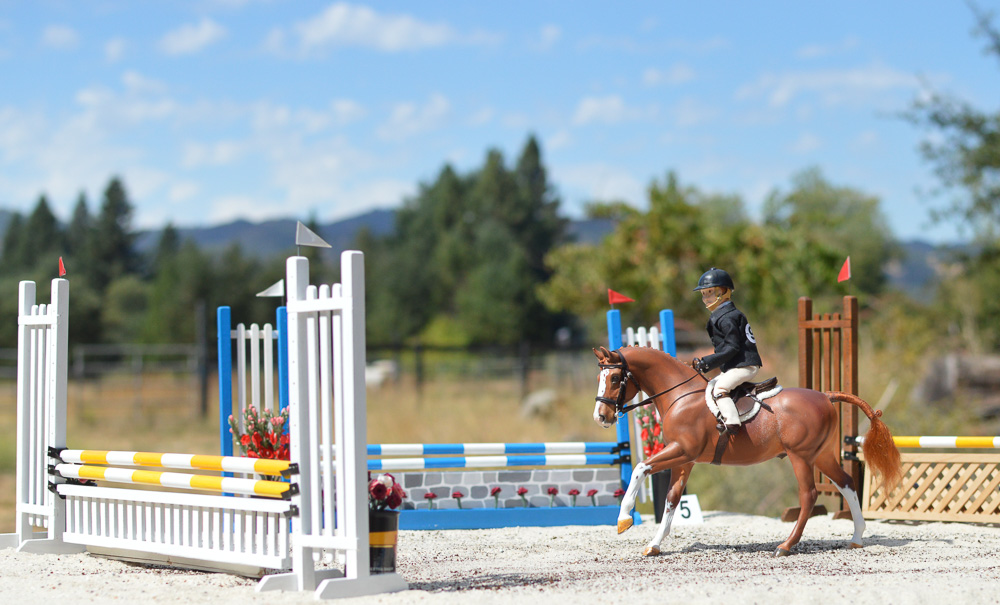
New pony jumper photos taken in 2024.
Just for fun, I started bringing him out again. New photos, and out to some live shows for halter. And then, hmm, well, I made him a new bridle, and decided what the heck, and took him for a spin in the performance division.
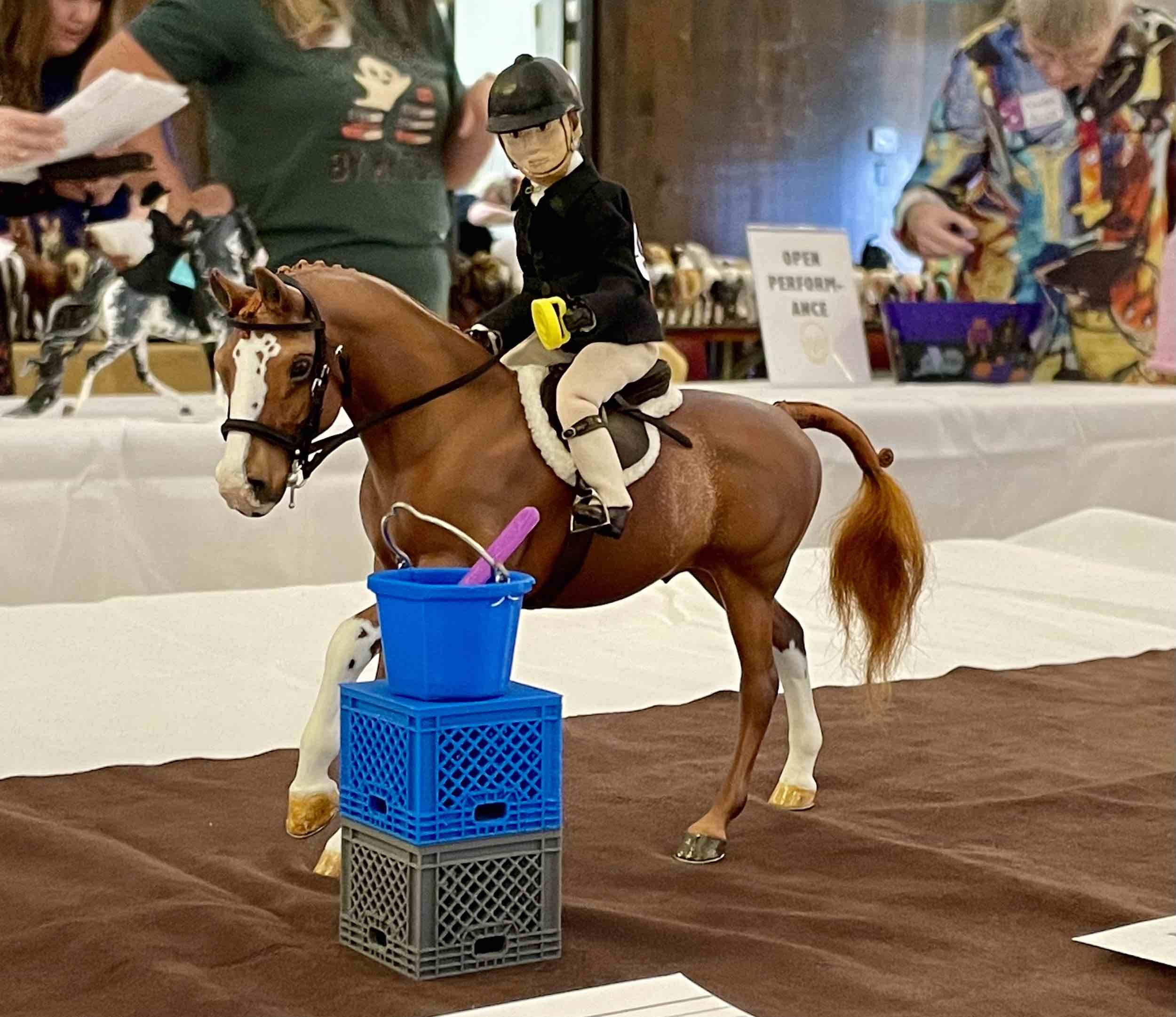
Pinball Wizard gaming at Canyons and Caballos in 2024
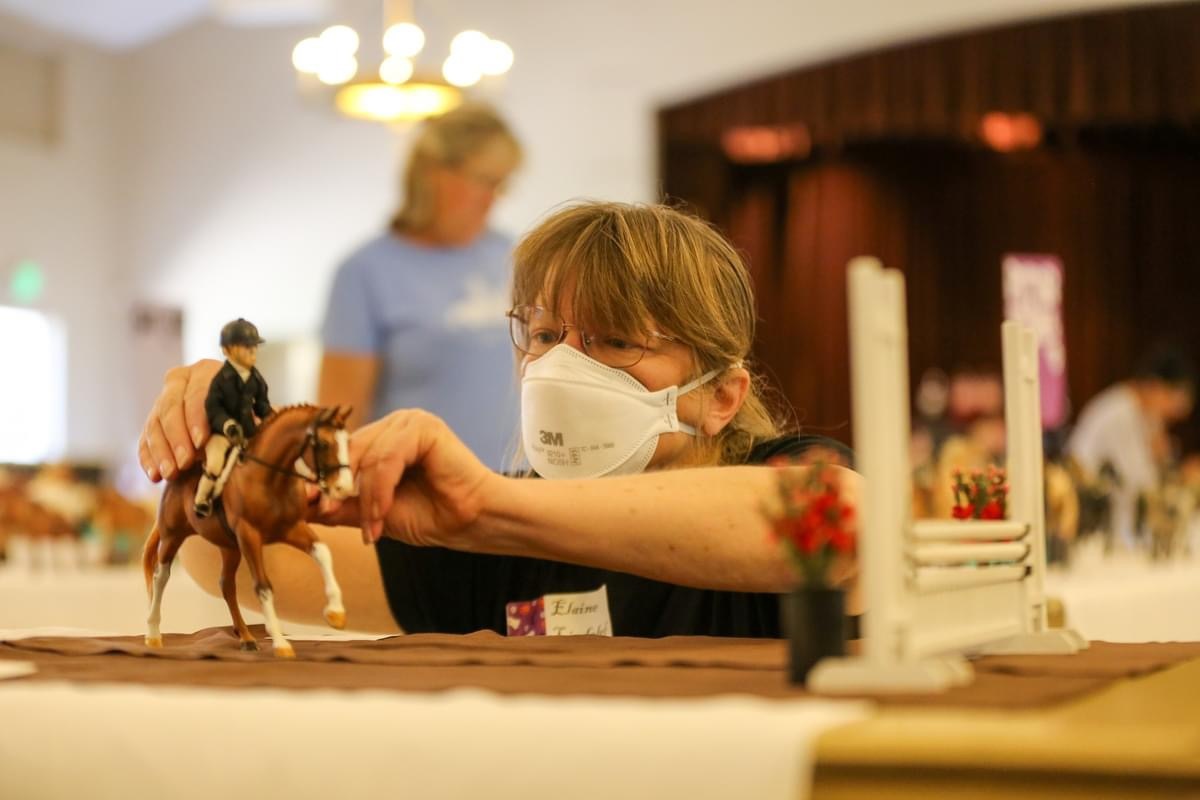
Elaine setting him up at Canyons and Caballos in 2024
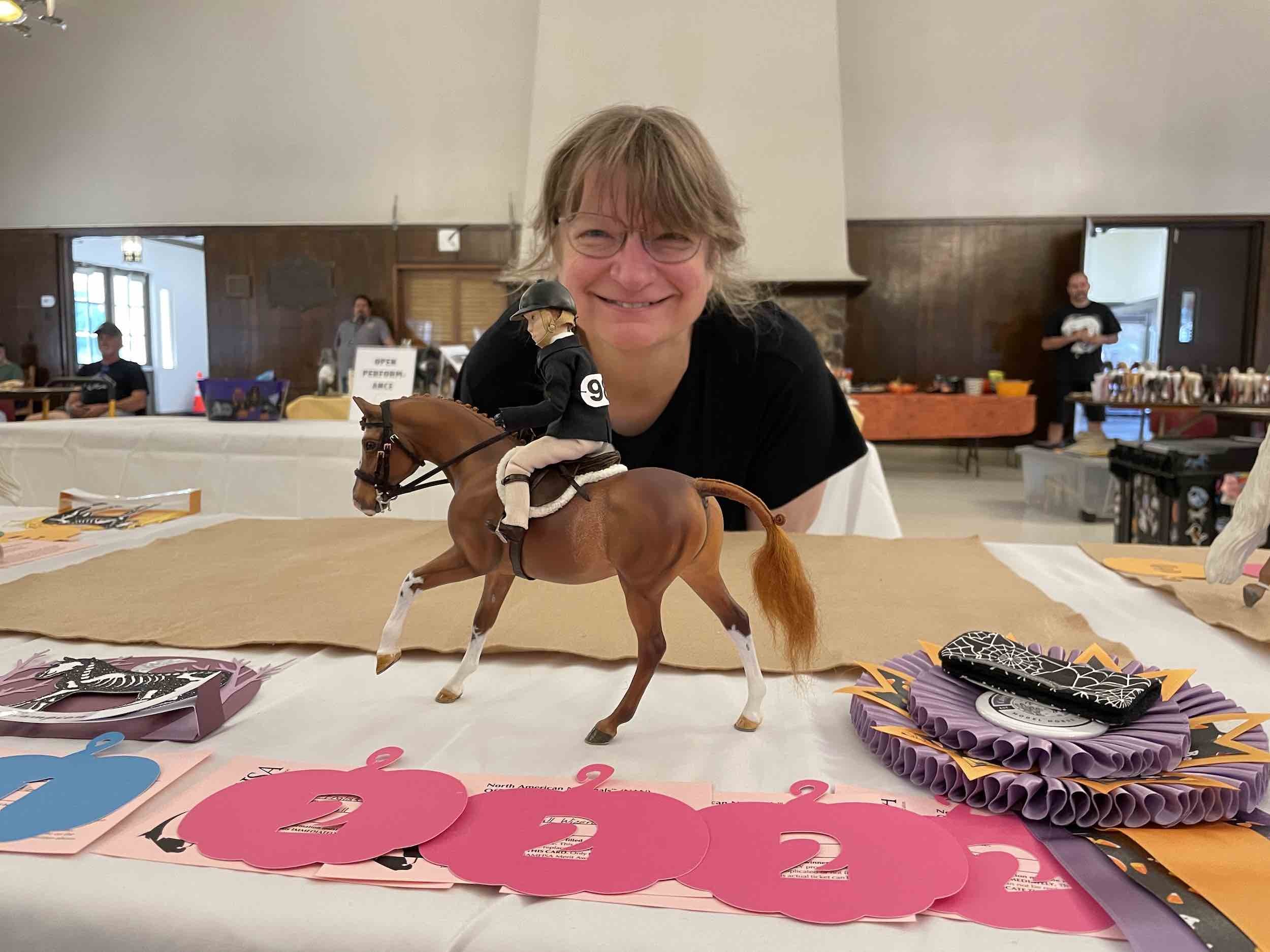
A successful end of day photo at Canyons and Caballos in 2024, English Performance Champion and overall Reserve Performance Champion
There are probably a few other horses out there who have NAN cards from 1994 and 2024 (and 2025!), but not many. And not many customs!
Somehow after all these years I missed that he had a Hartland head!
There’s not much of it on the surface - really it ended up as just an armature. The ears and the maybe the cheeks are the only parts where the Hartland plastic reaches the surface.
The Hartland TB that the head came off of is in a body box somewhere, with a narrowed Stock Horse Stallion head on it. Not sure why that happened, most likely it’s the classic Seemed Like A Good Idea At The Time. Maybe someday I’ll finish it!
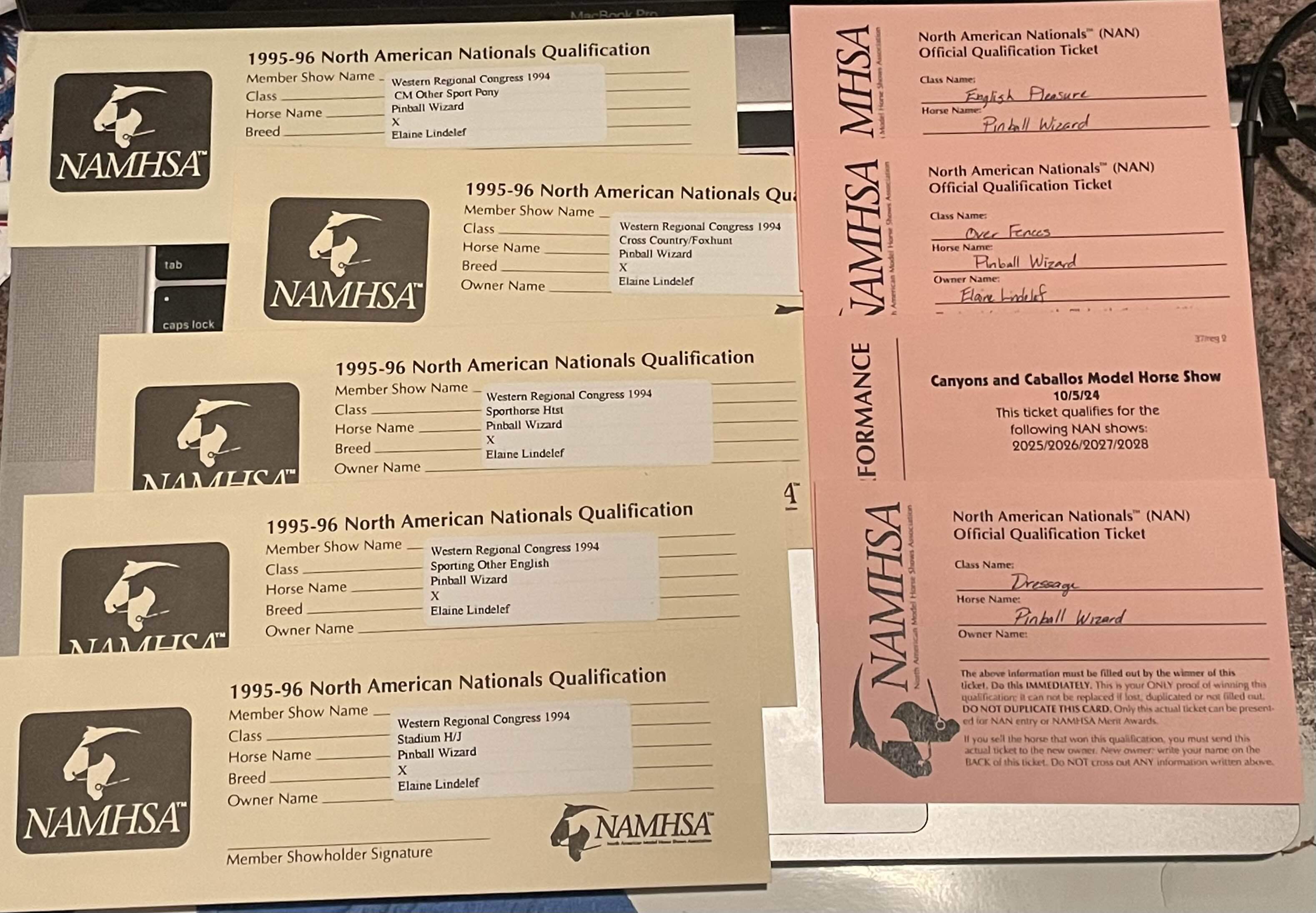
A selection of Pinball Wizard’s NAN cards, including some of the first given out in 1994 at Western Regional Congress in Las Vegas, NV, and a set earned in 2024 at Canyons and Caballos in Los Angeles, CA. It’s neat to see how the cards have changed too!
Great reading! I love the story behind the ponies.

